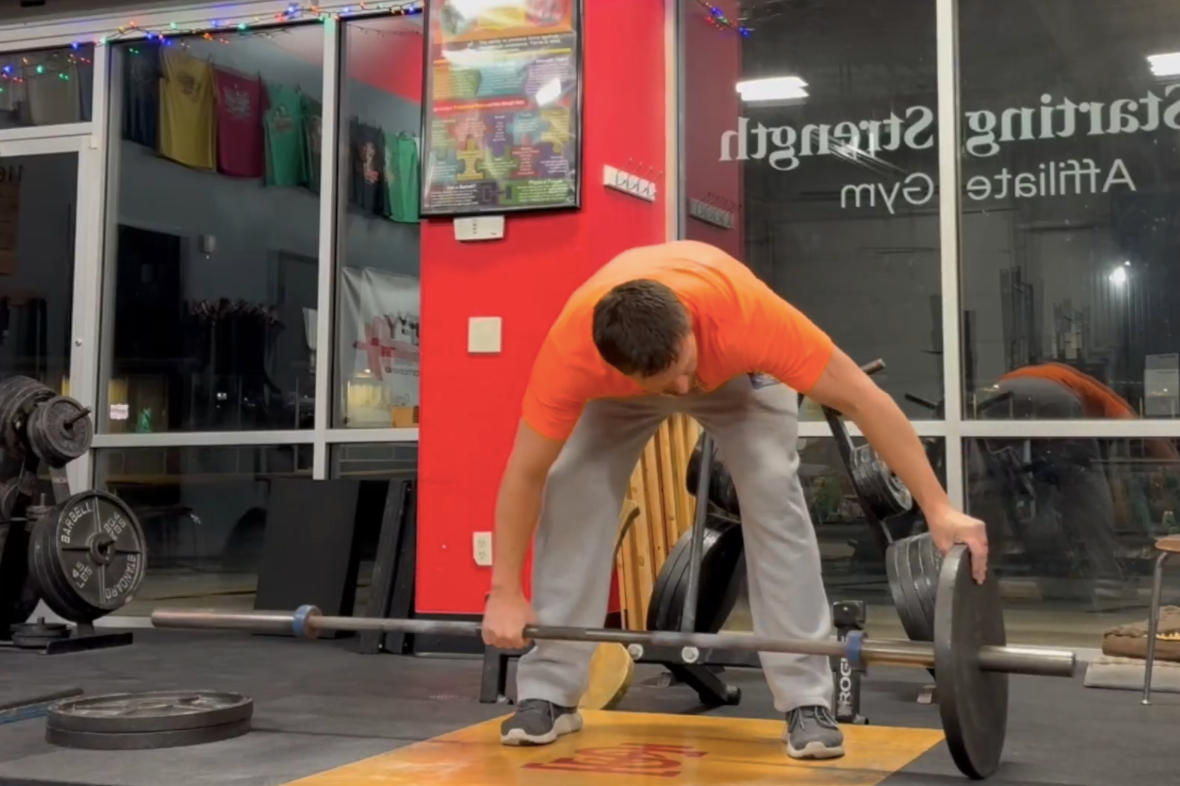Knee Sleeves: What, Why, Where, and When!
/(A Blast from the Past article originally posted on 07/16/21)
What on earth are knee sleeves, and why might you want to wear them? Let’s chat.
What is a knee sleeve?
A knee sleeve is a sleeve . . . that goes on your knee. They are generally made of neoprene, and they should fit quite snugly. A reasonable approach is to make sure that they are snug, but not so snug that you need someone else to help you put them on. If they’re so tight that you need to take them off between sets, I’d recommend something a little less snug.
Why might you want knee sleeves?
The main reason is if you have the highly specific medical condition known as “cranky knees.” Now, if you have achy knees when you squat (and we’re generally talking about the squat here), there may be some technical considerations to examine as well as some programming considerations, and your coach can help you with that.
Nonetheless, to put it simply, knee sleeves simply help your knees feel better. They provide some warmth and some compression, and without getting into the weeds here, both of those factors generally make your knees more comfortable. It’s a nice, warm hug for your knees. One of our coaches, Mike, once accused me years ago of holding out on him because I evidently hadn’t suggested knee sleeves until a year or so into his training. Once he put them on, it was love at first squat.
Where can you get knee sleeves?
You can find some at your local sporting goods store, but your best bet is this thing they’ve developed called the internet, which they have on computers now. The usual suspects - Amazon, Rogue, etc. - will have a host of options, which brings us to . . .
What should you get?
5 mm and 7 mm are both common thicknesses, and having used both, I’d recommend the 7 mm option. There are a ton of companies that make them - some of the more popular ones are brands like Rehband, SBD, STrong (Mark Bell), Stoic, and Rogue.
There’s a big price range from about $35-$45 for a pair of sleeves to $35-$45 for a single sleeve (which reflects the prices of the brands listed above). The biggest difference seems to be simple longevity - the cheap ones tend to wear out and tear within a couple of years, whereas the pricier ones typically last quite a bit longer - to the point that I’d probably say you’ll spend less money in the long run by going with the more expensive pairs. Of course, your mileage may vary.
Below are links to a few knee sleeve options that are popular with a number of our members at Testify:
When do you use knee sleeves?
The short answer is - squats and Olympic lifting. You’ll appreciate them for squatting, and you’ll appreciate them for the Olympic lifts because of the squatting involved in both snatching and cleaning (there is probably some benefit for the impact of landing as well).
What about using them on the press and bench press? Go ahead if you’d like - they won’t help, but they won’t hurt either.
The deadlift gets a little more discussion. In the deadlift, the knee doesn’t go through a large range of motion (as opposed to the knee’s longer ROM in the squat), so if your knees ache while squatting, but they feel fine while deadlifting, I’d recommend not wearing sleeves. The thickness of the sleeve - while not huge - is still one more thing you have to deal with when trying to keep the barbell close on the pull, so if you don’t need them, don’t use them. But if your knees also ache on the deadlift, and you find that the sleeves help, then go right ahead.
As always, we hope this helps you get stronger and live better.
-Phil
PS: Whenever you want even more Testify in your life, here are some free resources:
Book a free intro and strategy session with us HERE.
Pick up a free copy of Testify’s Squat Guide: 12 Tips to Improve Your Squat Now HERE.
Get our free weekly email - containing useful videos, articles, and training tips - HERE.
Follow Testify on Instagram HERE.
Subscribe to Testify’s YouTube channel HERE.
(Some links may be affiliate links. As an Amazon Associate, Testify earns from qualifying purchases.)







